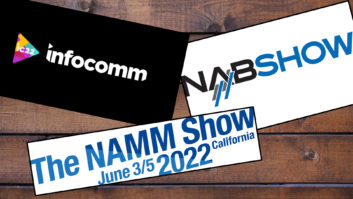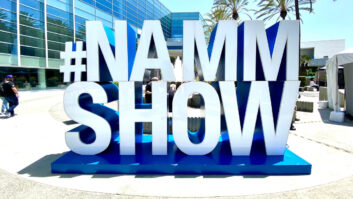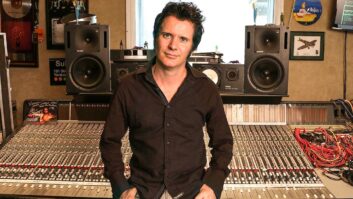The soul of any trade show is the people who attend it. Conventions are an important part of our industry, providing a forum for the exchange of ideas and opportunities to advance one’s knowledge, whether through AES papers and workshops or via more structured learning sessions such as the “university” programs run by NAMM and NSCA. But if people are the soul of a trade show, then exhibits are the backbone, allowing participants to examine and explore new technologies close-up and first-hand.
Clearly, the key to any successful trade show is a vibrant mix of exhibits, industry events and, of course, an enthusiastic audience of showgoers. However, there are two key points to keep in mind: First, conventions are a business, and a mighty competitive business at that. Second, a trade show is a dynamic entity. In order to survive — especially in less-than-ideal financial times — a trade show has to be tough, aggressive and willing to change to reflect new directions in the industry.
As an example of what to do right, consider this month’s Summer NAMM. In the latter years, when the show was based in Chicago, it was often referred to as the “wake on the lake,” due to its sluggish attendance and lack of direction. Nearly a decade ago, NAMM decided to focus the summer show on guitars and the acoustic instrument market and moved the expo to Nashville. The venue change not only brought NAMM to Music City — a draw for attendees — but also served the town’s thriving recording community, which boosted the participation of pro audio exhibitors. To cite a cliché, it was a “win-win” situation.
Having just returned from AES Europe (see report on page 96), I was able to experience a much different trade show situation. Certainly, today’s economic climate is hardly rosy, but surviving rough times requires aggressive action, and the success of last year’s New York AES — in spite of the worst possible conditions — proves this point.
In days of yore (actually, not even so “yore” ago), AES exhibits reflected the entire pro audio industry — recording, live sound, broadcasting and duplication. Little by little, certain market segments fell away, starting with the duplication/replication exhibitors, and to a smaller extent, live sound products. At AES Munich, there was barely a handful of live sound exhibits, and the overall perception was that EuroAES is becoming a local broadcasting show. Germany is a massive market in the area of home/project studios, but this niche was mostly absent from AES. Perhaps AES felt this audience wasn’t packed with serious “tonmeister” types, but this market represents a substantial number of audio buyers, which, if exposed to AES, could become more serious, educated users.
While AES seems to have been specializing of late, other shows have expanded their horizons. Once strictly an MI show, Frankfurt Musikmesse now includes entire exhibit halls devoted to music software, pro recording, P.A., DJ/lighting and installation products, catering to dealers and pro users during its first three days, followed by the general public on the weekend. Trade shows aren’t forever, as we learned with the SMPTE and APRS shows, for example. In order to flourish, AES Europe needs to widen its scope and look ahead, and so far, examining new host cities is a step in the right direction. Let’s hope this movement continues.




